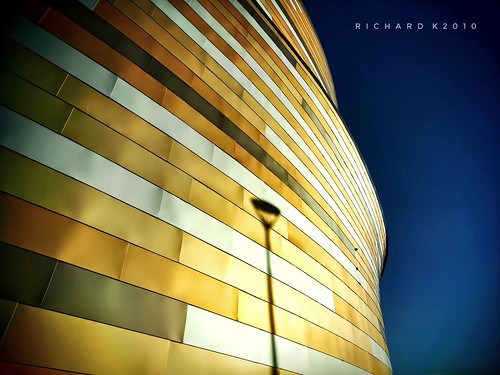Non-fertilized eggs have been laid by non-mated  grownup females and gathered 1 h after oviposition. Fertilized eggs ended up gathered and utilised quickly or permitted to produce until the indicated embryogenesis phase.Whole egg homogenates (TEH) had been ready by disrupting the eggs, with a plastic pestle, on ice chilly buffer containing 10 mM Hepes pH seven.2, four mM MgCl2, 50 mM KCl, and a protease inhibitors cocktail (Sigma-Aldrich, P-8340). A portion enriched in acidocalcisomes was attained by selectively lysing most vintage yolk granules in a hyposmotic buffer (five mM Hepes, pH seven.two) at place temperature (22uC) for 10 min. About 30 mg of day- eggs were disrupted in 500 ml of the hyposmotic buffer explained earlier mentioned, supplied with protease inhibitors. The sample was centrifuged twice at 10,000 g for one min at 4uC in the exact same buffer, and once in 5 mM Hepes in addition 8.5% sucrose. The ultimate pellet was utilized as acidocalcisome-enriched fraction (acidocalcisome portion) and was chemically fastened, speedily frozen or resuspended in appropriate buffer for the distinct assays or processes as explained in the subsequent sections. The supernatant of the 1st centrifugation (that contains the osmotically disrupted yolk granules) was also utilised in some experiments, and will be referred from now on as yolk portion.For typical transmission electron microscopy (TEM), samples ended up set in freshly geared up 4% formaldehyde, 2.5% glutaraldehyde diluted in .one M sodium cacodylate buffer pH 7.3 at 4uC for 24 h, and then embedded in epoxy resin, sectioned and stained employing standard techniques. For X-ray microanalysis, the samples were applied on to Formvar-coated copper grids and blotted dry with a filter paper. Samples have been examined in a JEOL 1200 EX transmission electron microscope operating at 80 kV. For spectra, X-rays have been gathered for one hundred s employing a Si (Li) detector with Norvar window on a to ten KeV strength variety with a resolution of 10 eV/channel. Analyses ended up executed using a Noran/Voyager III analyzer. For elemental mapping, the images have been recorded (2566192 pixels) with a frame time of 50 s and a whole of forty frames (dwell time one.017 ms) with the EDS pulse processor at fee 2. Analyses have been done making use of the application NSS two.3 X-ray Microanalysis (Thermo Fisher Scientific). Semiquantitative elemental examination was performed utilizing the CliffLorimer strategy, as earlier described by Miranda et al. (2004) [30]. 121104-96-9 Briefly, the atomic % was calculated from the measured excess weight % values (wt. %/ atomic wt.). The sum of the atomic weights of the selected components was then normalized to 100%. Benefits were expressed23692283 as the proportion of the aspects in the spectra. Cation alerts were also normalized and represented as the percentage of the phosphorus signal.
grownup females and gathered 1 h after oviposition. Fertilized eggs ended up gathered and utilised quickly or permitted to produce until the indicated embryogenesis phase.Whole egg homogenates (TEH) had been ready by disrupting the eggs, with a plastic pestle, on ice chilly buffer containing 10 mM Hepes pH seven.2, four mM MgCl2, 50 mM KCl, and a protease inhibitors cocktail (Sigma-Aldrich, P-8340). A portion enriched in acidocalcisomes was attained by selectively lysing most vintage yolk granules in a hyposmotic buffer (five mM Hepes, pH seven.two) at place temperature (22uC) for 10 min. About 30 mg of day- eggs were disrupted in 500 ml of the hyposmotic buffer explained earlier mentioned, supplied with protease inhibitors. The sample was centrifuged twice at 10,000 g for one min at 4uC in the exact same buffer, and once in 5 mM Hepes in addition 8.5% sucrose. The ultimate pellet was utilized as acidocalcisome-enriched fraction (acidocalcisome portion) and was chemically fastened, speedily frozen or resuspended in appropriate buffer for the distinct assays or processes as explained in the subsequent sections. The supernatant of the 1st centrifugation (that contains the osmotically disrupted yolk granules) was also utilised in some experiments, and will be referred from now on as yolk portion.For typical transmission electron microscopy (TEM), samples ended up set in freshly geared up 4% formaldehyde, 2.5% glutaraldehyde diluted in .one M sodium cacodylate buffer pH 7.3 at 4uC for 24 h, and then embedded in epoxy resin, sectioned and stained employing standard techniques. For X-ray microanalysis, the samples were applied on to Formvar-coated copper grids and blotted dry with a filter paper. Samples have been examined in a JEOL 1200 EX transmission electron microscope operating at 80 kV. For spectra, X-rays have been gathered for one hundred s employing a Si (Li) detector with Norvar window on a to ten KeV strength variety with a resolution of 10 eV/channel. Analyses ended up executed using a Noran/Voyager III analyzer. For elemental mapping, the images have been recorded (2566192 pixels) with a frame time of 50 s and a whole of forty frames (dwell time one.017 ms) with the EDS pulse processor at fee 2. Analyses have been done making use of the application NSS two.3 X-ray Microanalysis (Thermo Fisher Scientific). Semiquantitative elemental examination was performed utilizing the CliffLorimer strategy, as earlier described by Miranda et al. (2004) [30]. 121104-96-9 Briefly, the atomic % was calculated from the measured excess weight % values (wt. %/ atomic wt.). The sum of the atomic weights of the selected components was then normalized to 100%. Benefits were expressed23692283 as the proportion of the aspects in the spectra. Cation alerts were also normalized and represented as the percentage of the phosphorus signal.
